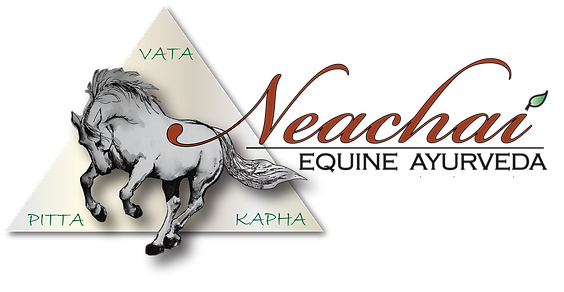By now most of you know the attributes and physical characteristics of the VATA dosha (personal genetic code) which maintains the unique psycho-physiological balance. So, lets break down the expression of the unbalanced dosha and what it will look like in your horse or dog.
Our bodies are an intricate web of tissues, glands and channels all communicating with each other with one common goal.... achieving homeostasis (balance). The cellular structure is multifaceted and responsible for metabolizing nutrients, producing energy and replicating to build structures. All life is made up from the reproduction of cells.
In Ayurvedic Medicine, we refer to the channels within the body as srotas’, channels in the body act like paths or roadways transporting blood and sensory information, absorbing nutrients and expelling waste products from the body.
The Vata dosha, governs all movement and processes in your mind and body including processes like blood flow, elimination, breathing, and the movement of thoughts in your mind.
Vata in balance
-
Energetic and vivacious
-
Learns easily
-
Clear and alert mind
-
Falls asleep easily at bedtime
-
Balanced digestion and elimination
-
Good circulation and even body
temperature
Vata out of balance
-
Tired and/or fatigued
-
Lack of focus or forgetful
-
Spaced out or scattered
-
Difficulty falling asleep
-
Occasional constipation, gas, wind
-
Can feel cold physically
-
Poor circulation - cold hands and feet
-
Feelings of anxiousness or worry
The disease path begins by disruption in the balance caused by environment, seasons, emotions etc.
*This begins in the large intestine, rectum and anal canal, causing lower abdominal distention, gas and bloating. Followed by complete colon irritation, effecting peristalsis and putting pressure under the diaphragm causing shallow breathing.
*The mobile quality of Vata moves from the GI tract and moving through the circulatory system, contacting heart and capillary layers of skin. At this stage your horse will have dry flaky skin, little 'idiopathic’ bumps on skin, cold ears, reduced circulation to feet causing chipping, flat soles.
*If the body is strong, the disease process will not progress, and simple changes to diet, accompanied with herb blends based on current environment and symptoms will suffice. If not, the disease will advance through Rasa dhatu (plasma) and Rakta dhatu (blood channels) causing dehydration, possible low-grade fever and compromised circulation.
*Progression continues to Mamsa dhatu (muscle tissue) showing as muscle spasms, muscle pain, tremers, atrophy and lack of coordination.
*The path continues to the Meda dhatu (fat tissues) causing dry skin, lack of sweating, subluxation of joints and even osteopenia.
*This is followed by reaching the Ashti (bone) showing as cracking/popping joints, spinal misalignments, neck pain, thyroid dysfunction, hair loss and ringing in ears.
*The last stage of disease pathway is the Majja dhatu (brain and spinal cord and nerve tissue) which presents as tingling, numbness in extremities, ticks, spasms, spinal pain, neuralgia, mood swings and anxiety.
This is a basic view of the disease path of a Vata, but addressing these as symptoms is not the answer to correcting the issue.
A comprehensive look at what your horse is eating, its lifestyle and current supplements, weighed against the symptoms present is how we determine the blend and protocol that is right for your horse or dog.

